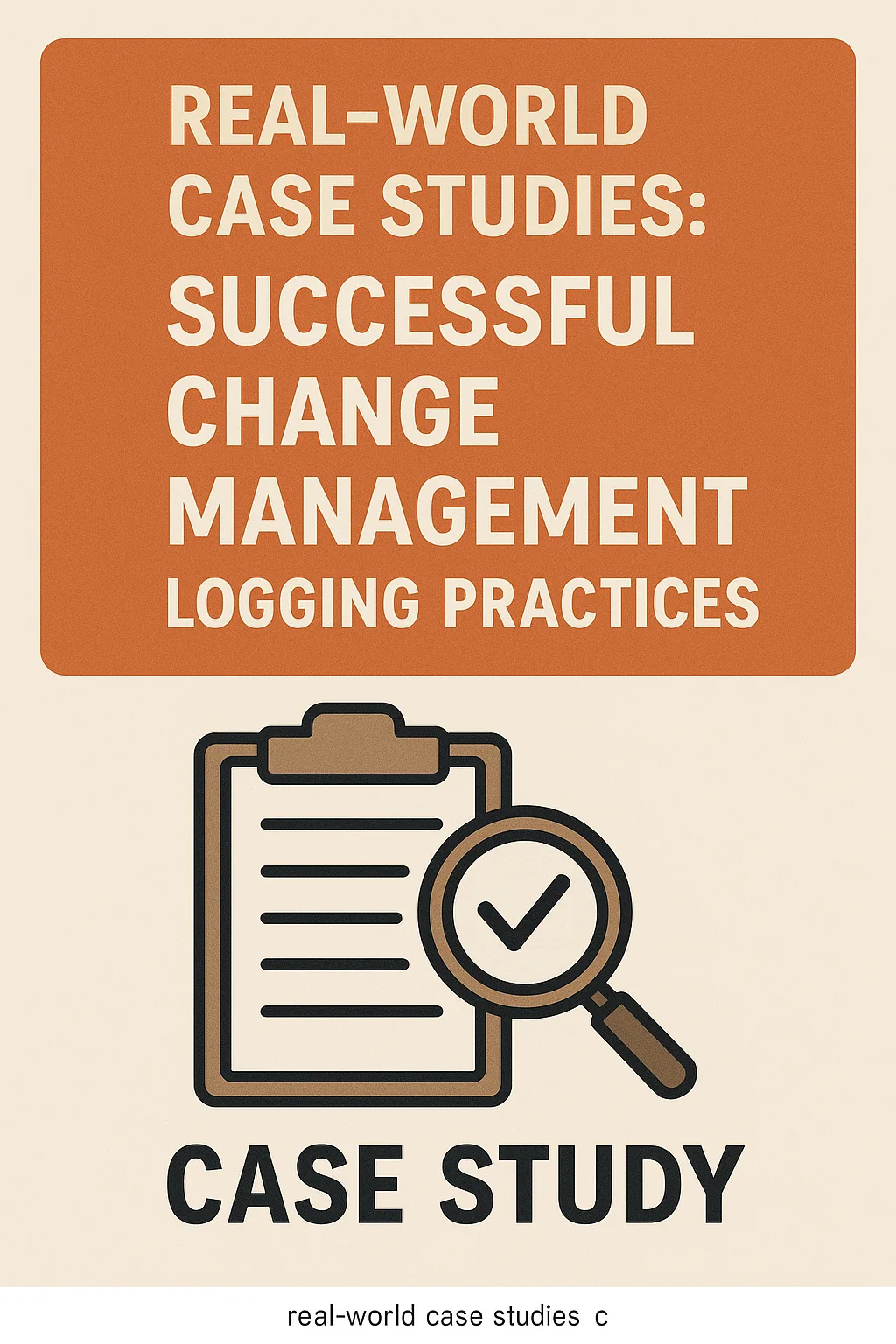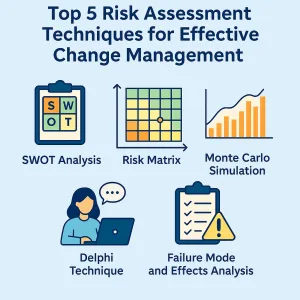Introduction
The ability to adapt to change is crucial for success. One of the key components that facilitate this adaptability is change management logging. This practice involves systematically documenting all changes made during a project, including the reasons for the changes, their impact, and the stakeholders involved. By maintaining a comprehensive change management log, organizations can ensure that all modifications are tracked, assessed, and communicated effectively, thereby minimizing disruptions and enhancing project outcomes.
The Role of Change Management Logging in Project Management
Change management logging serves several vital functions within project management:
- Documentation: It provides a clear record of all changes, which is essential for accountability and transparency. This documentation helps project managers and teams understand the evolution of the project and the rationale behind each decision.
- Impact Analysis: By logging changes, organizations can analyze the potential impacts on project scope, timelines, and resources. This analysis is crucial for making informed decisions and mitigating risks associated with changes.
- Communication: A well-maintained change management log facilitates better communication among stakeholders. It ensures that everyone involved is aware of changes and their implications, fostering collaboration and alignment.
The Importance of an Effective Change Management Log
Organizations that implement an effective change management log can reap numerous benefits:
- Enhanced Control: A detailed log allows project managers to maintain control over the project by providing insights into how changes affect overall objectives and deliverables.
- Improved Decision-Making: With a comprehensive record of changes, project leaders can make more informed decisions, leading to better project outcomes.
- Lessons Learned: An effective change management log serves as a valuable resource for future projects. By reviewing past changes and their impacts, organizations can identify patterns and improve their change management processes.
What to Expect from the Case Studies
In this section, we will explore real-world case studies of organizations that have excelled in change management logging practices. These examples will highlight:
- Innovative Approaches: How different organizations have developed unique strategies for logging changes effectively.
- Challenges and Solutions: The obstacles faced during the implementation of change management logs and the solutions that led to successful outcomes.
- Best Practices: Key takeaways and best practices that project managers and business leaders can adopt to enhance their own change management logging efforts.
By examining these case studies, readers will gain valuable insights into the importance of change management logging and how it can be leveraged to drive project success.
The Importance of Change Management Logging
Maintaining a change management log is not just a best practice; it is a critical component that can significantly influence the success of a project. By examining real-world case studies, we can better understand the benefits of effective change management logging and the challenges organizations face when these practices are neglected.
Benefits of Change Management Logging
- Improved Tracking: A well-maintained change management log allows project managers to track changes systematically. This tracking ensures that all modifications are documented, making it easier to reference past decisions and their impacts on the project timeline and deliverables. Organizations that excel in logging changes can quickly assess the evolution of a project and make informed decisions based on historical data [11].
- Accountability: Change management logs foster accountability among team members. By documenting who requested changes, who approved them, and when they were implemented, organizations can create a clear trail of responsibility. This transparency helps in holding individuals accountable for their roles in the change process, which can enhance team performance and morale [10].
- Enhanced Communication: Effective logging practices facilitate better communication among stakeholders. When changes are logged and shared with all relevant parties, it minimizes misunderstandings and ensures that everyone is on the same page regarding project modifications. This open line of communication is vital for maintaining alignment on project goals and expectations [11].
Mitigating Risks and Enhancing Project Success
A comprehensive change management log serves as a risk mitigation tool. By documenting changes, project managers can identify patterns that may lead to potential issues. For instance, if a particular type of change frequently results in delays or budget overruns, the team can analyze these instances to develop strategies to avoid similar pitfalls in the future. This proactive approach not only enhances project success rates but also contributes to more efficient resource allocation and planning [12].
Moreover, organizations that integrate change management logging into their project management processes often report higher levels of project success. By having a clear record of changes, teams can adapt more swiftly to evolving project requirements, ensuring that they remain aligned with organizational objectives and stakeholder expectations [11][15].
Common Challenges Faced Without Proper Logging Practices
Without a structured change management log, organizations may encounter several challenges:
- Increased Confusion: When changes are not documented, it can lead to confusion among team members regarding project status and expectations. This lack of clarity can result in duplicated efforts or misaligned priorities, ultimately hindering project progress [10].
- Difficulty in Assessing Impact: Without a log, it becomes challenging to assess the impact of changes on the overall project. Project managers may struggle to understand how modifications affect timelines, budgets, and resource allocation, leading to uninformed decision-making [12].
- Loss of Historical Context: A failure to maintain a change log means losing valuable historical context that can inform future projects. Organizations that do not document their change management processes may find themselves repeating mistakes or overlooking successful strategies from past initiatives [11].
The significance of maintaining a change management log cannot be overstated. By embracing effective logging practices, organizations can improve tracking, accountability, and communication, ultimately leading to enhanced project success and risk mitigation. As project managers and business leaders, recognizing the importance of these practices is essential for navigating the complexities of change in today’s dynamic business environment.
Tech Innovators Inc.
Overview of Tech Innovators Inc. and Their Project Landscape
Tech Innovators Inc. is a leading technology firm specializing in software development and IT solutions. With a diverse portfolio of projects ranging from mobile applications to enterprise software systems, the company operates in a fast-paced environment where adaptability and responsiveness to change are crucial. The organization has embraced a culture of innovation, which necessitates a robust change management framework to ensure that all project stakeholders are aligned and informed throughout the project lifecycle.
Description of Their Change Management Logging Process and Tools Used
Tech Innovators Inc. employs a comprehensive change management logging process that integrates seamlessly with their project management methodologies. The key components of their approach include:
- Change Request Documentation: All change requests are documented in a centralized system, allowing for easy tracking and management. This documentation includes details such as the nature of the change, the rationale behind it, and the potential impact on the project timeline and budget.
- Change Management Software: The organization utilizes specialized change management software that facilitates real-time logging and tracking of changes. This tool allows project managers to categorize changes, assign responsibilities, and monitor the status of each request. The software also integrates with other project management tools, ensuring that all team members have access to the latest information.
- Regular Review Meetings: Tech Innovators Inc. conducts regular review meetings to discuss logged changes. These meetings involve key stakeholders, including project managers, team leads, and clients, to assess the implications of each change and make informed decisions about implementation.
- Feedback Mechanism: A feedback loop is established to gather insights from team members regarding the change management process. This feedback is logged and reviewed periodically to identify areas for improvement.
Outcomes and Impacts of Effective Change Management Logging on Project Success
The implementation of a structured change management logging process at Tech Innovators Inc. has yielded significant benefits, including:
- Enhanced Communication: By maintaining a clear log of changes, the organization has improved communication among team members and stakeholders. Everyone involved in a project is kept informed about changes, reducing misunderstandings and fostering collaboration.
- Increased Project Success Rates: The company has reported a marked increase in project success rates, attributed to their proactive approach to managing changes. By effectively logging and addressing changes, Tech Innovators Inc. has minimized disruptions and maintained project alignment with strategic goals.
- Data-Driven Decision Making: The change management logging process provides valuable data that informs decision-making. Project managers can analyze trends in change requests, allowing them to anticipate potential challenges and adjust project plans accordingly.
- Continuous Improvement: The feedback mechanism has enabled Tech Innovators Inc. to refine their change management practices continually. By learning from past experiences, the organization has enhanced its ability to adapt to future changes, ensuring sustained success in an ever-evolving project landscape.
Tech Innovators Inc. exemplifies how effective change management logging can lead to improved project outcomes. Their structured approach not only facilitates better communication and decision-making but also fosters a culture of continuous improvement, positioning the organization for ongoing success in the competitive technology sector.
Healthcare Solutions Group
Background of Healthcare Solutions Group and Challenges Faced
Healthcare Solutions Group (HSG) is a prominent organization in the healthcare sector, dedicated to providing innovative solutions that enhance patient care and operational efficiency. HSG faced significant challenges, including regulatory changes, the need for improved patient data management, and the integration of new technologies. These challenges necessitated a robust change management strategy to ensure that all stakeholders were aligned and that transitions were smooth and effective.
The organization struggled with inconsistent communication regarding changes, leading to confusion among staff and stakeholders. Additionally, the lack of a structured logging system made it difficult to track changes, assess their impact, and ensure compliance with healthcare regulations. This situation highlighted the urgent need for a comprehensive change management logging system that could facilitate better decision-making and enhance overall project delivery.
Change Management Logging Methodologies and Software Solutions
To address these challenges, HSG implemented a systematic approach to change management logging. They adopted a combination of methodologies that emphasized transparency, accountability, and continuous improvement. Key components of their strategy included:
- Standardized Logging Procedures: HSG developed standardized procedures for documenting all changes, including the rationale behind each change, the stakeholders involved, and the expected outcomes. This ensured that all changes were recorded consistently and could be easily referenced in the future.
- Change Management Software: The organization invested in advanced change management software that allowed for real-time logging and tracking of changes. This software provided a centralized platform where team members could input changes, monitor their status, and assess their impact on ongoing projects. The software also included features for automated notifications, ensuring that all relevant stakeholders were informed of changes as they occurred.
- Training and Engagement: HSG recognized the importance of engaging their staff in the change management process. They conducted training sessions to familiarize employees with the new logging procedures and software, emphasizing the benefits of effective change management logging in improving project outcomes.
Improvements in Project Delivery and Stakeholder Satisfaction
The implementation of a structured change management logging system at HSG led to significant improvements in both project delivery and stakeholder satisfaction. Key outcomes included:
- Enhanced Communication: With standardized logging procedures and a centralized software platform, communication regarding changes became more transparent. Stakeholders were kept informed about the status of changes, which reduced confusion and increased trust in the change management process.
- Increased Efficiency: The ability to track changes in real-time allowed project managers to make informed decisions quickly. This agility led to faster project delivery times, as teams could respond promptly to emerging challenges and opportunities.
- Higher Stakeholder Satisfaction: By involving stakeholders in the change management process and keeping them informed, HSG saw an increase in overall satisfaction. Stakeholders felt more engaged and valued, which fostered a collaborative environment conducive to successful project outcomes.
Healthcare Solutions Group’s successful implementation of change management logging practices serves as a valuable case study for project managers and business leaders. By adopting standardized procedures, leveraging technology, and engaging staff, HSG not only overcame its initial challenges but also set a benchmark for effective change management in the healthcare sector.
Green Energy Corporation
Introduction to Green Energy Corporation and Their Project Initiatives
Green Energy Corporation is a leading player in the renewable energy sector, dedicated to transitioning from fossil fuels to sustainable energy sources. The organization has undertaken several ambitious projects aimed at reducing carbon emissions and enhancing energy efficiency. These initiatives not only align with global sustainability goals but also position the company as a frontrunner in the green energy movement. As part of their commitment to effective project management, Green Energy Corporation has implemented robust change management practices to navigate the complexities of their projects.
Examination of Their Change Management Logging System
Green Energy Corporation has developed a comprehensive change management logging system that is seamlessly integrated into their project workflows. This system is designed to document all proposed changes, track their progress, and assess their impact on project objectives. Key features of their logging system include:
- Change Request Form: A standardized form used to capture details of proposed changes, including the rationale, potential impacts, and required resources. This ensures that all changes are thoroughly evaluated before implementation.
- Change Impact Assessment: Each change request undergoes a rigorous assessment to determine its effects on project timelines, budgets, and overall goals. This proactive approach helps in identifying potential risks early in the process.
- Change Log Maintenance: The organization maintains a detailed log of all changes, which is regularly updated and reviewed. This log serves as a historical record that can be referenced for future projects, enhancing organizational learning.
By embedding this logging system into their project management practices, Green Energy Corporation ensures that change management is not an afterthought but a fundamental aspect of their project execution.
Results Achieved
The implementation of an effective change management logging system has yielded significant results for Green Energy Corporation:
- Enhanced Transparency: The logging system promotes transparency by providing all stakeholders with access to change requests and their statuses. This openness fosters trust and collaboration among team members and stakeholders, as everyone is informed about ongoing changes and their implications.
- Improved Project Adaptability: With a structured approach to logging changes, the organization has demonstrated increased adaptability in response to evolving project requirements. The ability to quickly assess and implement changes has allowed Green Energy Corporation to stay on track with their project timelines and objectives, even in the face of unforeseen challenges.
- Informed Decision-Making: The data collected through the change management log enables project managers to make informed decisions based on historical trends and outcomes. This analytical approach enhances the overall effectiveness of project management strategies.
Green Energy Corporation exemplifies how effective change management logging practices can lead to successful project outcomes. By prioritizing transparency and adaptability, the organization not only meets its project goals but also sets a benchmark for others in the industry.
Best Practices for Effective Change Management Logging
Maintaining a comprehensive change management log is essential for tracking modifications, understanding their impacts, and ensuring stakeholder alignment. Here are key takeaways from successful case studies that highlight effective change management logging practices.
Critical Elements of a Successful Change Management Log
- Clear Documentation: A successful change management log should include detailed descriptions of each change, including the reason for the change, its impact, and the stakeholders involved. This clarity helps in understanding the context and rationale behind each modification.
- Change Classification: Categorizing changes (e.g., minor, major, urgent) allows project managers to prioritize and address them appropriately. This classification aids in resource allocation and risk management.
- Impact Assessment: Each entry should include an assessment of how the change affects project scope, timeline, and budget. This helps in evaluating the overall project health and making informed decisions.
- Approval Tracking: Documenting who approved the change and when is crucial for accountability. This element ensures that all changes are authorized and that there is a clear record of decision-making.
Importance of Regular Updates and Stakeholder Involvement
- Continuous Engagement: Regularly updating the change management log fosters transparency and keeps stakeholders informed. This practice encourages collaboration and ensures that everyone is on the same page regarding project developments.
- Feedback Mechanism: Involving stakeholders in the logging process allows for valuable feedback, which can lead to better decision-making. Stakeholders can provide insights into potential impacts that may not have been initially considered.
- Adaptability: Frequent updates enable project teams to adapt to changes swiftly. This agility is vital in dynamic environments where project requirements may shift unexpectedly.
Tips on Selecting the Right Tools and Technologies for Logging
- User-Friendly Interfaces: Choose tools that are intuitive and easy to use. A user-friendly interface encourages team members to engage with the logging process, ensuring that updates are made consistently.
- Integration Capabilities: Opt for tools that can integrate with existing project management software. This integration streamlines workflows and reduces the need for duplicate data entry.
- Collaboration Features: Look for tools that facilitate collaboration among team members and stakeholders. Features such as comments, notifications, and shared access can enhance communication and engagement.
- Reporting and Analytics: Select tools that offer robust reporting capabilities. Analyzing change data can provide insights into trends and help in forecasting future project challenges.
By implementing these best practices, project managers and business leaders can enhance their change management logging processes, leading to more successful project outcomes. The case studies demonstrate that effective logging not only improves project visibility but also fosters a culture of collaboration and accountability within teams.
Conclusion
Effective change management logging is not merely a procedural formality; it is a critical component that significantly enhances project outcomes. By meticulously documenting changes, organizations can maintain clarity and transparency throughout the project lifecycle. This practice not only helps in tracking the evolution of project requirements but also aids in identifying the impact of changes on timelines, budgets, and resources. Successful case studies illustrate that organizations that prioritize change management logging are better equipped to navigate complexities and mitigate risks associated with project changes.
To further bolster project success, it is essential for project managers and business leaders to adopt best practices in change management logging. This includes establishing a structured logging process, ensuring timely updates, and fostering a culture of open communication regarding changes. By doing so, teams can effectively manage resistance, align stakeholders, and ensure that everyone is on the same page regarding project developments.
By committing to improve change management logging, organizations can not only enhance their project outcomes but also foster a more resilient and adaptive project environment. Embrace the opportunity to refine your processes and witness the positive impact on your projects.
Find out more about Shaun Stoltz https://www.shaunstoltz.com/about/.
This post was written by an AI and reviewed/edited by a human.



